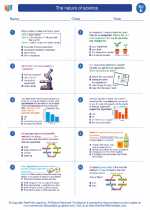Reproductive System
The reproductive system is a collection of organs and tissues that work together to allow for the production of offspring. It is essential for the continuation of a species.
Male Reproductive System
The male reproductive system consists of several organs, including the testes, epididymis, vas deferens, seminal vesicles, prostate gland, and penis. The primary function of the male reproductive system is to produce and deliver sperm.
Key Organs and Functions:
- Testes: Production of sperm and testosterone.
- Epididymis: Storage and maturation of sperm.
- Vas Deferens: Transport of sperm from the epididymis to the urethra.
- Seminal Vesicles: Production of seminal fluid.
- Prostate Gland: Secretion of prostate fluid, which is a component of semen.
- Penis: Organ for delivering sperm into the female reproductive tract.
Female Reproductive System
The female reproductive system includes the ovaries, fallopian tubes, uterus, cervix, and vagina. Its primary function is to produce eggs, receive sperm, and provide a nurturing environment for a developing fetus.
Key Organs and Functions:
- Ovaries: Production of eggs and female sex hormones (estrogen and progesterone).
- Fallopian Tubes: Transport of eggs from the ovaries to the uterus and the site of fertilization.
- Uterus: Nurturing the fertilized egg and developing fetus during pregnancy.
- Cervix: Opening of the uterus that allows the passage of sperm into the uterus and serves as the exit for the baby during childbirth.
- Vagina: Organ for sexual intercourse and the birth canal.
Common Reproductive System Disorders
Both males and females can experience various reproductive system disorders, including infertility, sexually transmitted infections (STIs), and reproductive cancers.
Study Guide
To understand the reproductive system, students should focus on the following key concepts:
- Identify and understand the function of key organs in the male and female reproductive systems.
- Explain the process of sperm production and maturation in males, as well as the process of egg production and ovulation in females.
- Describe the process of fertilization and the subsequent stages of pregnancy.
- Examine common reproductive system disorders and their potential causes and treatments.
- Discuss the importance of reproductive health and the prevention of STIs.
By mastering these concepts, students will have a comprehensive understanding of the reproductive system and its significance in the continuation of life.
.◂Science Worksheets and Study Guides Fifth Grade. The nature of science

 Worksheet/Answer key
Worksheet/Answer key
 Worksheet/Answer key
Worksheet/Answer key
 Worksheet/Answer key
Worksheet/Answer key
